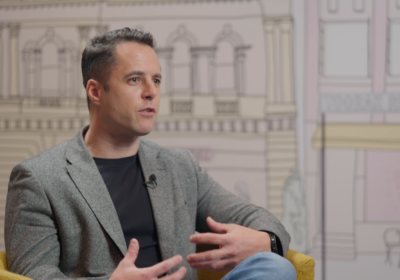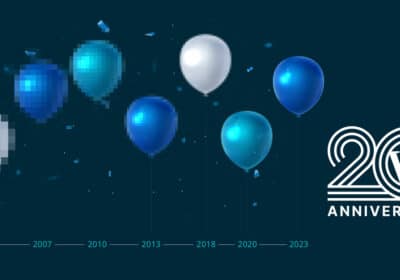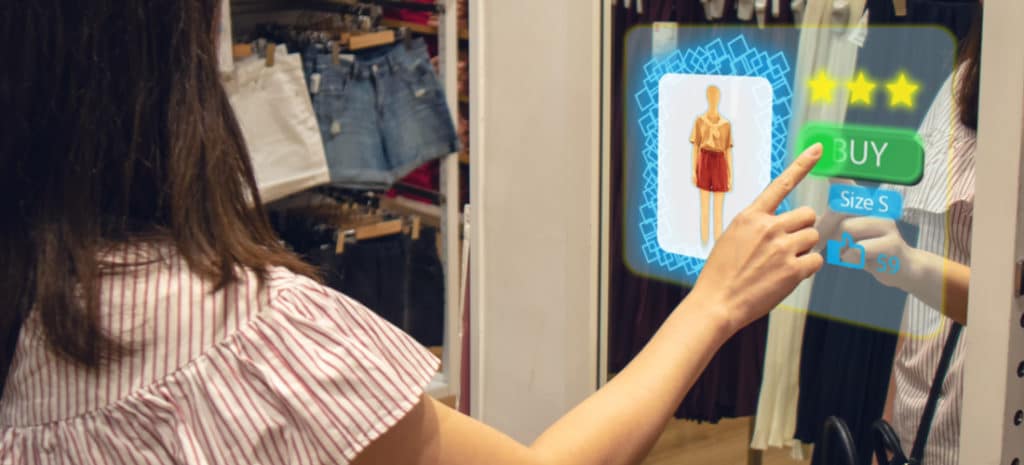To most consumers over 30, the AT&T brand has a ring to it—a telephone ring. Chief marketing officer Mo Katibeh has been working to change that at AT&T Business over the last two years.
The former AT&T Business Solutions is focusing on its mission to offer business customers digital solutions. In April of 2017, it launched a campaign called “The Power of &” to bring attention to their enterprise offerings and in 2018 it updated the campaign to focus on what it called Edge to Edge Intelligence. It was “a shift away from a telecom company to a technology leader and really putting humans at the center of how we bring this to life,” said Katibeh.
Katibeh is now focused on the virtues of 5G technology which is expected to spread across mobile networks in 2019 and beyond.
“When you think about 5G and other related technologies that are emerging at the same time—like the Internet of Things, AI, as well as edge computing—they’re really creating the opportunity to provide marketeers with that real-time intelligence that they’re looking for,” said Katibeh. “And as your customers are interacting with this technology, those real time insights are coming back to the marketing organization, which allows you to then respond in terms of your logistics and your supply chain”
Katibeh spoke to Velocitize about 5G and how it will revolutionize digital experiences.
Why is the coming of 5G important to marketers?
When you think about how is 5G different from 4G, then you start understanding the benefits. The first one is what we think of as unprecedented mobile performance: 5g is going to bring over reliability, significantly higher capacity (and) ultra-high speeds to wireless networks, to mobile broadband. But it’s more about just the speed; 5G is also going to offer significantly lower latency, or that response time from when I send the signal to when I get a response, to be as low as 10 milliseconds roundtrip.

The second one is massive device connectivity. Today, a lot of businesses are using Wi-Fi to power their in-store experiences—as an example, in retail—and Wi-Fi can only support up to 250 connections per access point. So when you start thinking about these sorts of solutions like endless aisle, points of sale, magic mirrors, etc. you start realizing that to truly enable a retail store for that next generation experience I’m going to need more than 250 connections; 5G can support up to millions of connections per square kilometer, if you want to think about it in that way. So it’s posed to be able to support all of the needs of the business.
Then the third one is the opportunity for innovation. How do you take that unprecedented mobile performance and that massive device connectivity and really think through the new capabilities and connected devices that are going to give people and businesses more ways to create solutions (many of which we’ve already imagined)? I’m confident that the innovators out there will come up with new use cases that we haven’t even dreamt up yet.
One that I’m super excited about is this concept of a magic mirror. What magic mirror allows you to do—whether it’s glasses or lipsticks or beauty products or clothing—it lets you virtually try these things on before you buy them. Where latency and edge compute comes into play is the experience of the shopper when they’re standing in front of this magic mirror, which is really a high resolution digital sign with cameras built in that scans your face your body what have you and then allows you have a bespoke custom way to try on makeup, try on different glasses.
That latency of 5G, coupled with edge compute, makes that a truly seamless experience as a customer moves their head. As they see it from different angles, those glasses follow them near-perfectly, without any sort of delay. So they really get a sense of: This is how I look.
(With) a magic mirror with 5G and edge compute, you don’t have to worry about figuring that out anymore. You go stand in front of the mirror and it’s building a custom bespoke polygon of your body; then it suggests for you: Hey this shirt might look good. You want a jacket recommendation with it all? Just swipe.
So now, instead of trying on four or five or 10 things you can literally try on hundreds of combinations in real time. And you don’t have to carry that in stock; you can use a mobile point-of-sale device which also works on the same network to order whatever combinations the customer is interested in and it’s then drop-shipped to their house.
You’re creating a physical and digital experience that historically you only could have dreamt about, as well as creating operational outcomes for that business in terms of less restocking, more of your people interacting with your customers, etc.
Once these things start filtering in through the into the stores, how do you think it’s going to change consumer expectations? What is going to be the table stakes now?
This is where I think it’s so important for the chief marketing officer and marketers in general to really lean in and understand this emerging technology: So that they can be at the forefront of it and not be left behind as their competitors are engaging in it and creating those new experiences, which then reshapes the end-consumer’s expectation of what an amazing experience looks like.
We’ve been talking a lot about retail, but last week we put out a press release with the leading hospice provider in America, a company called Vitas. What Vitas does is such an incredibly important thing for their customers. They help end-of-life experiences. As people are approaching end of life, how do they ensure that that experience is the best experience that it can be both for that individual, as well as for their families?
How they’re interested in using 5G and the trials we’re doing together is: They know that virtual reality experiences, where it’s immersive for that person, can really help them transport themselves from the situation they’re in—the chair, the bed, the hospice environment, or even their own home, if that’s where they’re serving them—to be somewhere else. These studies have shown that this can be 50 percent more effective than opioids, which is one of the leading ways that they provide comfort for someone going through this.
The innovative use cases, that opportunity for innovation we talked about earlier, is just limitless. And it’s when marketeers and technologists lean in that they can think through for their industry: How can I use this to create an amazing end-consumer or employee outcome?
What do you see on the horizon? Are there any technologies out there that will change things further?
The beauty of the 5G revolution is it’s not just about the higher speeds and lower latency; 5G is arriving at the same time as other game-changing technologies are coming into their own. There’s four key ones that I really think coupled with 5G are going to drive that next wave of innovation, both for businesses as well as businesses creating experiences that consumers get to enjoy, and that is: cloud, edge compute, the Internet of Things and artificial intelligence.
When you combine these elements together, you really create an environment that will transform retail, that’s going to make autonomous vehicles a reality, and makes it possible to build smart factories, and revolutionize healthcare for you. All of the examples we talked about use those technologies in parallel to 5G. It will shape society in the years to come.





Join the conversation